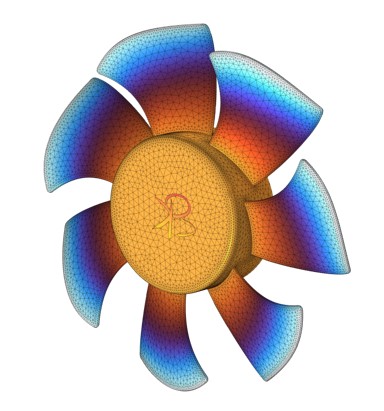The release of COMSOL Multiphysics 6.3 brings a suite of powerful new features, improved performance, and refined tools that benefit both academic research and industrial applications. The latest updates aim to streamline workflows, enhance simulation accuracy, and offer more robust solutions across various fields of engineering and scientific study. Below, we’ll walk through the major highlights of this release point by point, emphasizing both academic and industrial use cases.
Check Official COMSOL Resouces HERE. and courses HERE
check the update details here 👇
Electric Discharge Module: Expanding Simulation Frontiers
One of the flagship features of this release is the Electric Discharge Module, which facilitates the modeling of electrical breakdowns, sparks, and plasma discharge phenomena. By simulating the intricate physics of ionized gases, this module fills a critical gap for engineers and researchers working on high-voltage applications.
- Practical Applications: Imagine designing a circuit breaker for a power grid. Accurately modeling how and where a breakdown might occur under high voltage can make systems safer and more efficient. Similarly, in plasma research, this tool is invaluable for studying complex ionization dynamics in industrial applications like arc welding or plasma etching.
GPU Acceleration: Speed Redefined
Simulation speed often determines how many iterations or variations of a model can be tested within a deadline. COMSOL 6.3 introduces GPU acceleration, promising up to 25x faster computations for certain simulations. This improvement applies to both time-dependent models and iterative workflows, transforming how users approach complex simulations.
- Why It Matters: A team designing wind turbines, for example, can now run high-resolution transient simulations of turbulent airflows and structural responses in less time. Faster results mean more opportunities for refinement and optimization, giving companies a competitive edge in innovation.
Geometry Preparation Tools: From CAD to Mesh with Ease
Modeling real-world systems often starts with importing detailed CAD geometry. COMSOL has upgraded its geometry preparation tools to handle complex designs more effectively, ensuring that even intricate details are preserved while creating meshes suited for accurate simulations.
- Simplifying the Process: For an engineer analyzing the heat transfer in a compact heat exchanger, the geometry may contain tiny features that traditional tools struggle with. COMSOL’s improved tools simplify these workflows, saving hours of manual adjustments.
Structural Mechanics: Better Insights into Thin Structures and Fasteners

The Structural Mechanics module now supports enhanced modeling for thin structures, fasteners, and spot welds. These updates are critical for industries that rely on lightweight designs without compromising strength.
- Use Case: Picture an automotive manufacturer evaluating the durability of a vehicle chassis with dozens of welds and fasteners. With COMSOL 6.3, they can simulate the mechanical behavior of these connections under different loads, providing insights into durability and performance under real-world conditions.
Fluid-Structure Interaction: Bridging Fluid and Solid Dynamics
Fluid-structure interaction (FSI) is a key area in multiphysics simulation. COMSOL 6.3 strengthens this capability by improving coupling between fluid and solid mechanics, allowing users to model systems where the two domains interact dynamically.
- Real-Life Example: Designing a bridge that must withstand wind forces requires understanding how the structure oscillates and bends under fluid flow. This updated functionality allows engineers to explore such scenarios with greater precision, ensuring safer and more resilient designs.
Electromagnetics and MEMS: Pushing the Boundaries of Small-Scale Design
Electromagnetic simulations have been refined in this release, with features tailored for MEMS (micro-electromechanical systems). These updates allow for better modeling of electrostatic forces and electromechanical coupling.
- Why It’s Important: In the fast-paced electronics industry, manufacturers rely on MEMS for devices like gyroscopes, accelerometers, and sensors. COMSOL 6.3 makes it easier to predict how these tiny systems will perform in demanding environments, paving the way for more reliable and sophisticated products.
Turbulence Modeling: A New Level of Fluid Dynamics Accuracy

With its new Reynolds-stress turbulence models, COMSOL 6.3 addresses challenges in modeling anisotropic flows and separated flow conditions, such as those found in high-speed or confined environments.
- Example Application: A chemical engineer designing a reactor can now simulate the effect of turbulent mixing on chemical yields more accurately. By understanding these dynamics, engineers can optimize reactor efficiency while reducing operational costs.
Wave Optics: Streamlined Periodic Structures
The Wave Optics Module introduces a more intuitive workflow for simulating periodic structures, alongside improved tools for extracting parameters in RF and microwave designs.
- Field Application: In photonics, engineers developing diffraction gratings or periodic waveguides will benefit from these enhancements. The ability to simulate optical performance with fewer computational hurdles makes it easier to design devices for telecommunications or high-precision instrumentation.
User Experience: Streamlined and Intuitive
Beyond performance and functionality, COMSOL has improved the overall user experience in version 6.3. From a more accessible interface to enhanced model deployment tools like COMSOL Server, users can enjoy a more intuitive and collaborative simulation environment.
- Why This Stands Out: Teams working across disciplines can deploy simulation models through the server, enabling stakeholders from different departments to test designs or validate results without needing to learn the full COMSOL interface. This kind of accessibility is crucial for modern, fast-paced project environments.
Transforming Academic and Industrial Applications
COMSOL Multiphysics® 6.3 is not just a collection of features but a toolset that empowers engineers, scientists, and researchers to solve today’s most pressing challenges. Whether you’re optimizing renewable energy systems, exploring nanotechnology, or designing safer infrastructure, these updates provide the tools to innovate with confidence and precision.
The updates in COMSOL Multiphysics® 6.3 reflect the platform’s commitment to supporting innovation across industries and academic fields. With enhanced speed, accuracy, and usability, this release makes it easier to tackle complex, real-world problems. From designing safer electrical systems to exploring groundbreaking physics, COMSOL 6.3 ensures users are equipped for the challenges of tomorrow.
Want to discuss? let's talk here.
Check out YouTube channel, published research
you can contact us (bkacademy.in@gmail.com)
Interested to Learn Engineering modelling Check our Courses 🙂
This article is provided for educational and informational purposes only and should not be construed as official guidance. COMSOL® and COMSOL Multiphysics® are registered trademarks or trademarks of COMSOL AB. Any other product names, trademarks, or registered trademarks mentioned are the property of their respective owners. Use of these names does not imply any affiliation, endorsement, or sponsorship. The views expressed in this article are those of the author and do not necessarily represent the views of COMSOL AB or any other organization.
